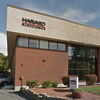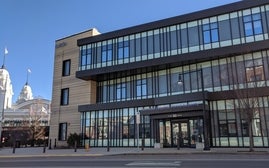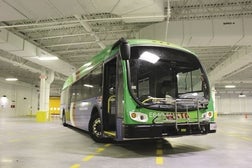Patrick Rolls Out Transportation Options
Lawmakers and Massachusetts residents will have to wait a few more days to hear how Gov. Deval Patrick plans to pay for the $13 billion in additional transportation and infrastructure investments he believes are needed over the next decade to keep the state’s economy competitive.
As part of what has a become a multi-step unveiling of Patrick’s long-awaited transportation financing plan, the governor described a system in need of $1.02 billion in additional annual revenue, money that would be used to fund expansion projects like South Coast rail and the Green Line extension to Medford and move transportation employees off the capital budget, where taxpayers are racking up interest costs associated with paying salaries.
Transportation Secretary Richard Davey said the plan, titled “The Way Forward: A 21st Century Transportation Plan,” would bring the state’s capital investment in public roads, bridges and transit to $25 billion through 2024.
But Patrick said he would offer more specifics about his preferred method for generating the new revenue when he gives his State of the Commonwealth address Wednesday night and files his budget a week later, delaying for the time being the more controversial aspects of the plan.
Patrick called the report, prepared in collaboration with the Massachusetts Department of Transportation Board, a “stark, clear-eyed, non-partisan and fact-based” analysis of what it will cost to fund the type of transportation system the public has demanded at hearings throughout the state.
“What’s as plain as day is that we have choices to make. We can choose to invest in ourselves, to invest in a growth strategy that has proven time and again to work, or we can choose to do nothing. But let’s be crystal clear and honest with each other. Choosing to do nothing is a choice too. That is a choice, and that choice has consequences,” Patrick said.
Patrick continued, “It means longer commutes, cuts in services, larger fare and fee increases and a continuation of the self-defeating economics that leaves large parts of our population cut off from opportunity and growth. I choose growth. I hope you will too.”
Revenue Options
The report outlined several revenue options that would each generate $1 billion a year. The ideas include a 30-cent increase in the gas tax, a sales tax hike to 7.75 percent, or an increase in the income tax from 5.25 to 5.66 percent. But Patrick did not suggest he would seek to generate the funding all from one source.
The governor said some options were “more appealing to me than others,” but suggested there was “room for debate about it.”
Patrick said he would recommend that any sources of new revenue be comprehensive enough to not just plug holes in the MBTA budget – which faces a $140 million deficit in 2014 - but to make needed investments throughout the system, be dedicated to transportation and be competitive with fees and tax rates charged by competitive states.
Patrick suggested a gas tax increase, alone, would not meet his criteria for keeping Massachusetts competitive. “It would take a tripling of the gas tax to fund this plan. It would put us way out of sync with our competitors in the region and nationally, actually, so that is not at the top of my list,” he said.
John Jenkins, the chairman of the MassDOT board, said he heard from citizens across the state during public hearings last year that customers want more service, not less.
“The debate can no longer be whether to invest in our transportation system, but how to invest in a way that’s responsible, adequate and supports economic growth,” Jenkins said.
Secretary Richard Davey, who delivered a detailed presentation on the administration priorities and the funding needed to meet their goals, said reforms will continue to be a part of the solution.
Claiming $500 million in savings over the three years since the state went through a major consolidation of transportation agencies, Davey said another $50 million could be saved by eliminating manual toll collection and moving toward electronic tolling.
Projects To Be Funded
The plan would put $5.2 billion in additional funding into roads, bridges and bicycle and pedestrian infrastructure; $3.8 billion into transit infrastructure; and $275 million into the RMV and airports.
It would also address a $684-million operating deficit over the next decade at the MBTA, MassDOT and regional transit authorities, including a shift of full-time employees paid through borrowing to the operating budget.
“The current system we have to day we cannot afford,” Davey said.
The plan calls for $1.18 billion to be invested in bridge repairs, $1.25 billion in hundreds of local and regional highway projects, $930 million for Interstate 91 in Springfield and the Interstate 93 and 95 interchanges in Woburn and Canton, and $430 million for bicycle and pedestrian improvements.
Davey said $2.4 billion would be used to purchase new cars for the T’s Red, Orange and Green lines, some of which were purchased as far back as 1969 for the Red Line and 1979 for the Orange Line. Unlike cars and trolleys purchased with federal funds, Davey said using state money would allow the state to require that those cars be built in Massachusetts, creating more jobs.
$11.1M For WRTA
Locally, the plan includes an $11.1-million funding increase for the Worcester Regional Transit Authority, as well as interchange improvements at Interstate 495 and the Massachusetts Turnpike, and reconstruction of routes 9 and 20.
The plan also includes $12 million for improvements and safety enhancements at the interchange of I-495 and Route 9 in Westborough, reconstruction of Quinsigamond Avenue from Brosnihan Square to Southbridge Street in Worcester, and resurfacing of Route 119 in Groton and Littleton.
Another $850 million would be used to replace MBTA and RTA buses, and $300 million would go toward MBTA power and facilities upgrades to reduce frequency of delays and disabled trains.
Read more
Massachusetts Transit, Infrastructure Plan Requires Painstaking Review











0 Comments